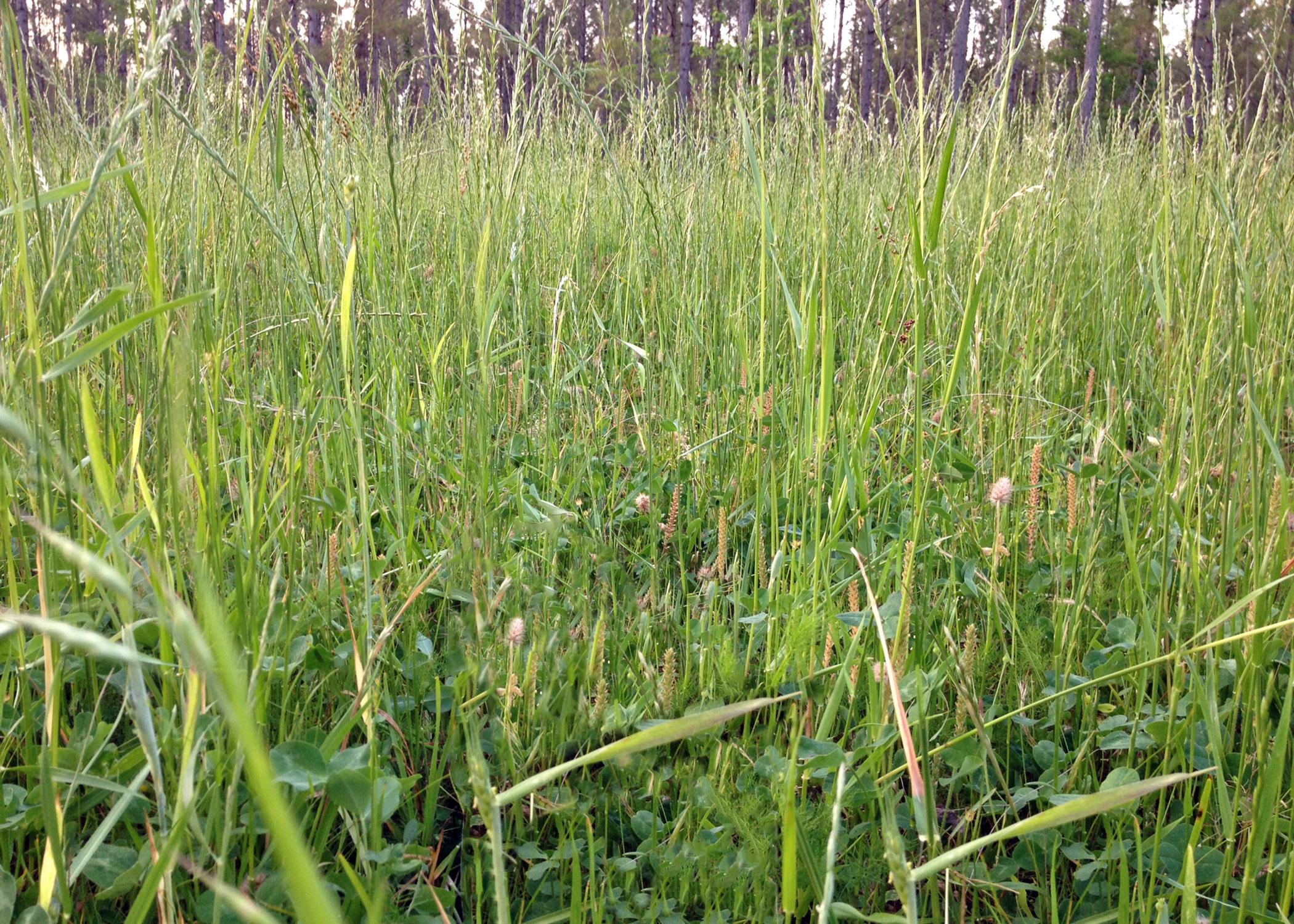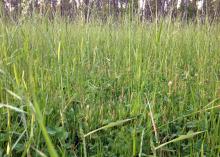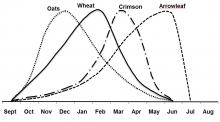Information Possibly Outdated
The information presented on this page was originally released on August 22, 2014. It may not be outdated, but please search our site for more current information. If you plan to quote or reference this information in a publication, please check with the Extension specialist or author before proceeding.
Cool-season food plots benefit wildlife, diversity
As fall approaches, many hunters and landowners begin to turn their attention toward planting cool-season wildlife food plots. If you’re like me, it’s something you enjoy doing, and it’s a good excuse to get outside and play in the dirt.
But while you’re out there having fun, you might as well get the most for your time and money. Here are some often overlooked, but important, tips and suggestions for making the most of your cool-season food plots this fall and winter.
Providing high-quality forages for wildlife via supplemental plantings begins with soil testing. Soil test results provide information regarding soil pH and fertility. They also include the necessary lime and fertilizer application rates to adjust soil pH and address nutrient deficiencies based on specific forage types. Simply applying a few bags of 13-13-13 fertilizer on a food plot is not advisable, and may even be counterproductive.
Forage crops perform best in soils with pH values between 5.8 and 6.5. Maintaining soil pH within this optimal range enables forage plants to maximize fertilizer use efficiency for better growth and yield. It also increases forage tastiness and nutritional values for wildlife.
Agricultural lime is applied to increase soil pH. However, lime moves and reacts slowly in the soil, so it should be applied three to six months before planting. It should be disked into the soil whenever possible because it is not water-soluble.
If you’re pressed for time, there is a pelletized form of “quick lime” that will help initially, but it is short-lived. Soil pH will need to be addressed again before the next planting.
Another way to maximize benefits of wildlife food plots is to plant two or more forage crops together. Mixed-forage plots provide wildlife with diverse forage types that are available year round. Mixed-forage plots tend to attract a wider variety of wildlife species and more frequent visits than do single-forage plots.
Many seed companies sell pre-mixed seed for forage plots. A mixture of oats, winter wheat and crimson clover is economical and readily available. However, DIY seed mixtures can be just as productive.
When planting mixed-forage plots, seed size matters. Crimson clover seeds are larger than some other forages, such as ladino, red clover, arrowleaf clover, chicory and brassicas. The smaller seeds often settle to the bottom of the hopper when combined with larger seeds in a cyclone spreader. As a result, most of the small-seeded species will be unevenly distributed.
Instead, plant the crimson clover, oats and wheat first. Then use a hand seeder to sow small seeds separately.
A final recommendation is to avoid planting ryegrass in your cool-season food plots. Although deer will eat ryegrass, it has lower crude protein values, is less palatable and is not as easily digested as oats, wheat and cereal rye.
Also, ryegrass may become invasive in food plots. Ryegrass produces a lot of seed and when allowed to mature, the seeds remain in the soil for years. Planting and managing food plots are excellent ways to provide additional food sources and enhance nutrition for wildlife in the fall and winter months. It can be a very rewarding experience for landowners and hunters to contribute to improved carrying capacity of the land and improved animal health and conditioning. Food plots can also increase hunting and wildlife viewing opportunities.
For more information about wildlife food plots, please refer to Mississippi State University Extension Service Publication 2111, Supplemental Wildlife Food Planting Manual for the Southeast.

Editor’s Note: Extension Outdoors is a column authored by several different experts in the Mississippi State University Extension Service.










